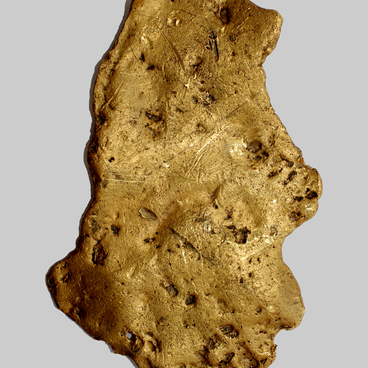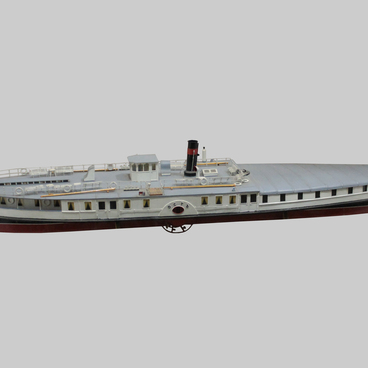A colepere is the national Bashkir headdress, a pointed red velvet hat with silk lining that is decorated with tinsel ribbons. The hat belonged to the canton chief.
The canton jurisdictional system was introduced in 1798-1865 on the territory of Bashkiria. They used this military form of administration to strengthen the southeastern borders of Russia and finally subdue the Bashkir region. The settlement area for the Bashkirs, Mishars, and Orenburg and Ural Cossacks was divided into cantons. These population groups, according to a decree from 1798, were regarded as military classes, and they were entrusted to protect the Orenburg border line demarcated in the 18th century. This line, which ran from the Tobol River up the Uy River and then on down the Ural River to the Caspian Sea, was divided into five sections. The Bashkir and Mishar cantons were supposed to serve each year in the first four sections, partly sharing this duty with the Orenburg Cossacks. The Ural Cossacks served in the fifth section, from Uralsk to the town of Guryev.
In total, 21 cantons were formed by decree on the territory of the Bashkir region: 11 were Bashkir, 5 were Mishar, and 5 were for the Orenburg Cossacks. They did not have special names, and differed only by their sequential number. For example, the Bashkirs in the Osinskiy and Perm districts were part of the first canton,
the ones in Birskiy were in the fifth one, and the ones in Ufa ones were in the seventh canton. The latter, in turn, were divided into yurts — teams. Yurts consisted of villages. With the introduction of this kind of administrative structure, the government increased its control over the daily life of the Bashkirs and Mishars.
Military service became the main responsibility of the Bashkir and Mishar population. The Bashkirs and Mishars were also involved in the wars waged by Tsarist Russia, and in performing heavy compulsory labor.
The canton jurisdictional system was introduced in 1798-1865 on the territory of Bashkiria. They used this military form of administration to strengthen the southeastern borders of Russia and finally subdue the Bashkir region. The settlement area for the Bashkirs, Mishars, and Orenburg and Ural Cossacks was divided into cantons. These population groups, according to a decree from 1798, were regarded as military classes, and they were entrusted to protect the Orenburg border line demarcated in the 18th century. This line, which ran from the Tobol River up the Uy River and then on down the Ural River to the Caspian Sea, was divided into five sections. The Bashkir and Mishar cantons were supposed to serve each year in the first four sections, partly sharing this duty with the Orenburg Cossacks. The Ural Cossacks served in the fifth section, from Uralsk to the town of Guryev.
In total, 21 cantons were formed by decree on the territory of the Bashkir region: 11 were Bashkir, 5 were Mishar, and 5 were for the Orenburg Cossacks. They did not have special names, and differed only by their sequential number. For example, the Bashkirs in the Osinskiy and Perm districts were part of the first canton,
the ones in Birskiy were in the fifth one, and the ones in Ufa ones were in the seventh canton. The latter, in turn, were divided into yurts — teams. Yurts consisted of villages. With the introduction of this kind of administrative structure, the government increased its control over the daily life of the Bashkirs and Mishars.
Military service became the main responsibility of the Bashkir and Mishar population. The Bashkirs and Mishars were also involved in the wars waged by Tsarist Russia, and in performing heavy compulsory labor.
The canton form of administration was abolished in 1865. On February 1st, 1866, the process of directly transferring five provinces with Bashkirs living on them (Vyatka, Orenburg, Perm, Samara, and Ufa) to civilian control was completed. This is how the transfer of the people in the Bashkir army from military to civilian control was completed.



